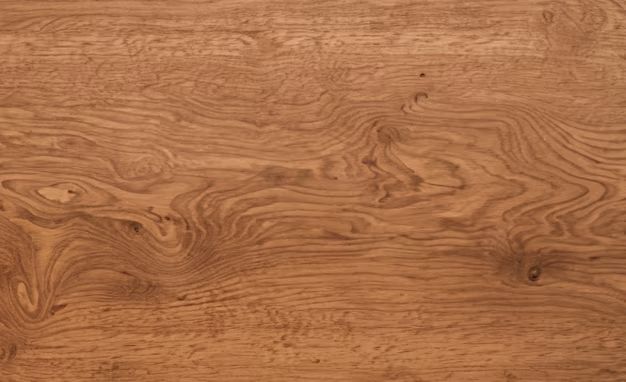Ash wood is a popular choice for furniture, flooring, baseball bats, tool handles and other wood products due to its strength, hardness and appealing grain pattern. However, like all wood types, ash does have some disadvantages that need to be considered when choosing it for a project.
Page Contents
Prone to Splitting
One of the biggest drawbacks of ash wood is its tendency to split, both during the drying process and once in use. Ash has an open grain structure, which allows moisture to penetrate deeply into the wood. As the wood loses moisture, it shrinks unevenly across the growth rings and can cause cracks and splits to form. This is especially problematic with wide ash boards used for furniture or flooring. Precautions need to be taken when kiln drying ash lumber to prevent excessive splitting.
In use, ash wood will continue expanding and contracting with changes in moisture content. This seasonal wood movement can cause splits, cracks and checks to form in the finished piece. Proper acclimation of the wood before use along with allowing for wood movement in joinery design is important for reducing splits in ash furniture or flooring.
Mitigating Ash Splitting
There are a few techniques that can help mitigate the splitting tendencies of ash lumber:
- Slow kiln drying schedule – The lumber is dried slowly over several weeks to allow even, gradual moisture loss across growth rings.
- End coat sealers – Coating the ends of fresh cut ash lumber helps regulate moisture loss and prevent end splits.
- Proper acclimation – Allowing ash wood to equalize to the environment’s moisture levels before use reduces movement later on.
- Allowing for wood movement in joinery – Using glues, sliding dovetails and other joints that allow for expansion and contraction.
Even with these precautions, some splitting may still occur but can be minimized with careful processing and design.
Susceptibility to Decay
Ash wood also has only moderate natural durability and resistance to decay. Without proper treatment, ash lumber exposed to moisture is susceptible to rot and fungal attack. This can become an issue when using ash in applications like outdoor furniture, exterior millwork or decking.
The sapwood of ash is particularly vulnerable, having almost no natural rot resistance. However, the heartwood is more decay resistant due to its higher tannin content. Proper drying and frequently maintaining a surface finish are important for outdoor ash wood projects.
Improving Decay Resistance
There are several ways the decay vulnerability of ash wood can be improved:
- Applying wood preservatives – Treatment with pesticides protects against fungal decay and insects.
- Using heartwood – Selecting boards with a higher percentage of heartwood improves decay resistance.
- Maintaining finish – Keeping a fresh coat of paint, stain or sealer on exterior ash wood.
- Proper construction – Allowing for drainage and ventilation to prevent moisture buildup.
Weaker Strength Properties
While considered a strong hardwood, ash falls short of oak, hickory and other denser species in some strength categories:
| Strength Property | Ash | Red Oak |
|---|---|---|
| Modulus of Rupture | 13,000 psi | 15,000 psi |
| Modulus of Elasticity | 1.6 million psi | 1.8 million psi |
| Compression Parallel to Grain | 4,730 psi | 5,670 psi |
| Shear Strength | 1,310 psi | 1,620 psi |
This matters in structural applications like floor joists, decking, and furniture where oak is generally a superior choice for supporting heavy loads without deflecting. Ash can still perform well but the lower densities need to be accounted for in the design.
Dent and Scratch Potential
The relatively soft fibers and lower density of ash wood also make it more prone to dents and scratches compared to other hardwoods. The weak earlywood zones with lower density allow dents to form more easily under point loads or blows. And the overall reduced hardness of ash leaves it more vulnerable to scratching and abrasion.
While ash flooring and furniture can develop a charming patina from wear over time, excessive denting or scratching can detract from the wood’s appearance. Protective finishes and careful use help prevent serious damage issues.
Variation in Color
Ash exhibits a fair degree of natural color variation from board to board. The sapwood is light-colored, while heartwood ranges from beige to light brown. But uneven absorption of stains and finishes can lead to a somewhat blotchy appearance.
While this color variation adds visual interest, it can also make it more difficult to achieve a uniform appearance across a finished ash floor, tabletop or cabinet face. Using wood with similar heartwood content, applying conditioners, or simply embracing the color variation help overcome this disadvantage.
Conclusion
Ash wood remains a popular choice despite disadvantages like its tendency to split, dent, and scratch more easily than some other hardwoods. With careful processing techniques, protective finishes and joinery that allows for wood movement, high-quality ash lumber can mitigate these downsides.
Understanding the unique properties and quirks of ash leads to smarter material selection and design choices. There are ways to work around its limitations to take advantage of ash’s attractive grain patterns, stability and workability that make it suitable for so many different wood products.
With awareness of its potential to split, scratch or decay, the disadvantages of ash wood are manageable. When chosen for suitable applications and handled properly during design and construction, ash can be a rewarding wood species with generations of valued use.
